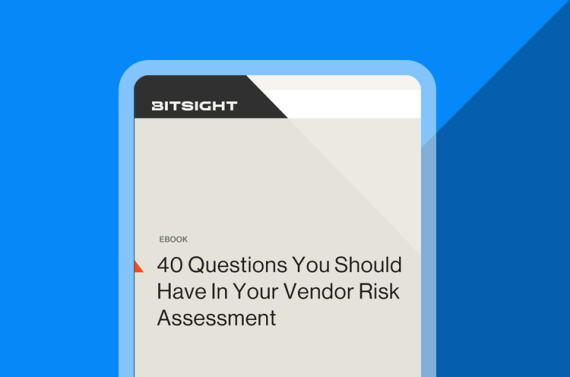With this ebook, we'll help you prioritize which vendors need the most attention with an in-depth security assessment – such as those with low security ratings, or critical vendors that maintain constant contact with your company’s systems.
How to Conduct an Efficient and Objective Vendor Security Audit
Tags:

Vendors are essential to your business. They help you optimize your offerings, digitally transform, and stay competitive. But this interconnected digital ecosystem creates cyber risk. Indeed, studies suggest that 74% of companies who have experienced a breach say it resulted from giving too much privileged access to third parties.
One of the most effective ways to mitigate third-party risk is to conduct a vendor security audit before onboarding and intermittently throughout the contract term. But to truly uncover the security posture of your vendors, it’s essential that you hit on the most pertinent questions and then supplement those answers with data-driven insights.
Let’s take a look at what questions to include in your vendor cybersecurity audit and how you can streamline your assessment process to yield better results.
Questions to Ask During Your Vendor Security Audit
There are literally thousands of questions you can ask your vendors about their security and risk management policies and controls, but some are more critical than others. For example, key governance and structural questions to ask include:
- Who is responsible for cybersecurity within the organization?
- Is there a cross-organizational committee that meets regularly to discuss cybersecurity issues?
- How do you prioritize your organization’s most critical assets?
- How are cybersecurity incidents reported?
- How do you protect sensitive customer data?
- Do you outsource any IT or security functions? If so, what do those providers do and what type of access do they have?
Your vendor security audit must also uncover how each vendor manages their cybersecurity controls and technology. This section of your cyber risk assessment questionnaire should touch on the following:
- How do you inventory authorized and unauthorized devices and software?
- What were the results of your most recent penetration test?
- How do you assess the security of the software that you develop and acquire?
- What processes do you use to monitor the security of remote connections?
- Do you have a data recovery capability?
- How do you plan for and train for a cybersecurity incident?
These are just a few questions you can use to vet your third parties. For more, check out our eBook: 40 Questions You Should Have In Your Vendor Security Assessment.
Supplement Your Questionnaires with Objective Data
While traditional vendor security audits and questionnaires have their place, they are often subjective and only provide a point-in-time snapshot of a vendor’s security posture.
To supplement your questionnaires, you must also evaluate your vendors using data-driven insights into their cybersecurity hygiene and controls. For instance, with Bitsight Security Ratings, part of Bitsight for Third-Party Risk Management, you can gain near real-time visibility into a vendor’s security posture—at the click of a button. Security ratings, which range from 250 to 900, provide an objective, outside-in view of your third-party business ecosystem. Unlike traditional one-and-done assessment practices, ratings are updated daily and allow you to validate your vendors’ questionnaire responses quickly and confidently.
Depending on how they score, you can then prioritize which vendors require a more rigorous security assessment and a deeper dive into their security processes and policies. You may decide, for example, that the assessment process for vendors with a high security rating may not need to be as rigorous, while the process for vendors with lower ratings must be more thorough.
Vendor Security Auditing: Make it a Continuous Process
Once the contract is signed, it’s critical that you continue to keep a pulse on your vendors’ changing risk profiles. Annual audits can help with this task, but they can be costly and time-consuming.
Instead, use Bitsight for Third-Party Risk Management to monitor your vendors’ cyber health continuously and automatically throughout the life of the relationship. With Bitsight, you’ll get dashboard views into each vendor’s risk profile and receive alerts when their security ratings drop below pre-agreed risk thresholds. You can also share Bitsight’s findings with vendors—making risk management a more collaborative process.
Find a Path To Efficiency
As your organization works to manage third-party cyber risk, you must find efficiencies where you can. But properly vetting your vendors can be difficult if you don’t have all the information you need. Traditional cybersecurity audits also take time to perform and are hard to scale.
Combining the steps above and augmenting your questionnaire-based approach with Bitsight’s powerful tools can help you validate your vendors’ security controls, continuously monitor third-party risk, and drive confidence in your vendor risk management program.



